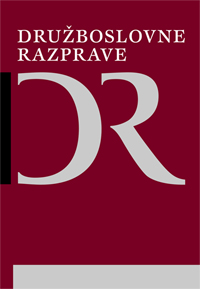Democratic transition and elite integration in Slovenia 1988-1995
Democratic transition and elite integration in Slovenia 1988-1995
Author(s): Hajdeja Iglič, Andrej RusSubject(s): Social Sciences
Published by: Slovensko sociološko društvo (in FDV)
Keywords: Democratic consolidation; elite structure; elite integration; Eastern Europe
Summary/Abstract: Integrated elite structure is the key for regime stability because ‘consensually integrated’ elites are more inclusive of different elite circles and opposing elite factions, thus reducing the possibility of democratic breakdowns. Integration of elites in the national arena, and consequently the consolidation of democracy, depends largely on ability of elite actors to form ties with people in different social and policy circles. Elite integration is thus defined as crosscutting elite circles. In the study of ego-networks of elite actors in Slovenia before and after the transition we found systematic changes in elite structure that confirm the general trend toward elite integration. We found that post-transition networks were larger, more inclusive of weak ties and contacts with dissimilar point of view or sectoral affiliation. This trend of opening-up, and reaching out of post-transition elite actors is consistent with the increasing elite integration. While these findings indicate the trend toward elite integration in Slovenia, the path to consensual unity of elites is still long and uncertain.
Journal: Družboslovne razprave
- Issue Year: 16/2000
- Issue No: 032-033
- Page Range: 113-137
- Page Count: 25
- Language: English

